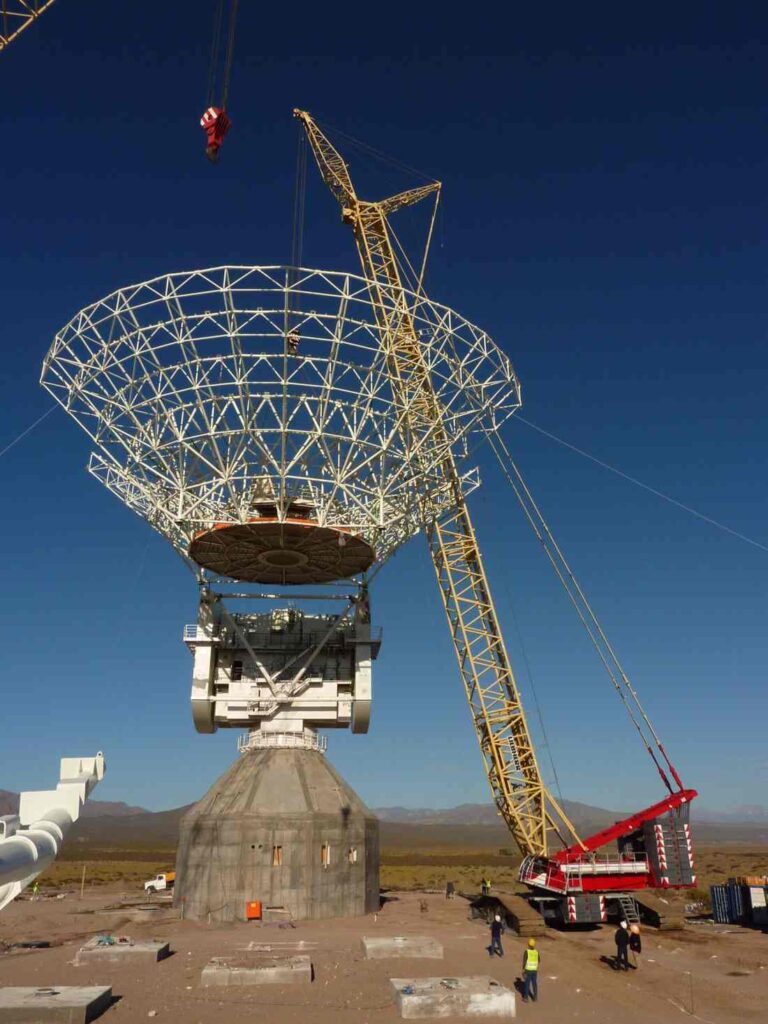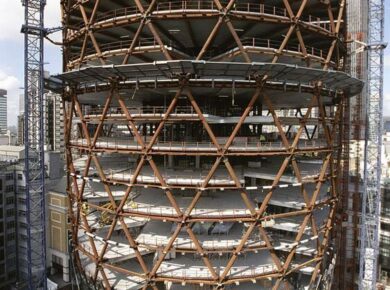Inauguration of ESA tracking station at Malarguë
One of the more recent major development projects at ESA was the design and construction of ESA’s third deep-space ground station at Malargüe, Argentina. The station (DSA 3) enables global deep-space tracking coverage together with DSA 1 and 2 in New Norcia, Australia, and Cebreros, Spain, respectively.

Photo: European Space Agency / ESA,CC BY-SA 3.0 IGO
On 7 December 2011, the huge 35 m-diameter dish antenna was hoisted into place, marking a major milestone in construction. The delicate and demanding operation took several hours and had to wait for a calm day with no wind. On 17 December 2012, the station was formally inaugurated.

Photo: European Space Agency / ESA,CC BY-SA 3.0 IGO
ESA’s tracking station network – Estrack – is a global system of ground stations providing links between satellites in orbit and ESOC, the European Space Operations Centre in Darmstadt.
The essential task of all ESA ground tracking stations is to communicate with spacecraft, transmitting commands and receiving scientific data and spacecraft status information.

Source: esa.int
These technically advanced stations can track spacecraft almost anywhere – circling Earth, watching the Sun, or voyaging deep into our Solar System. The network was established in 1975, with the first 15 m-diameter station located at Villafranca del Castillo, Spain, for the International Ultraviolet Explorer mission.

Photo:ESA/U. Kugel
Each station has one antenna of 70 meters in diameter, plus several smaller ones, with the antennas capable of transmitting and receiving data from interplanetary and Earth-orbiting spacecraft. The huge dishes – whose moveable steel structures weigh in at 620 tonnes – can be rotated, elevated and aimed with pinpoint accuracy despite high winds and heat, and transmit radio signals with up to 20 kW of power.
About the Author:

Bruno Dursin – Managing Director at Believe in Steel. Bruno has more than 30 years of experience in promoting steel & steel solutions. His clients benefit from his extensive network within the building industry.



